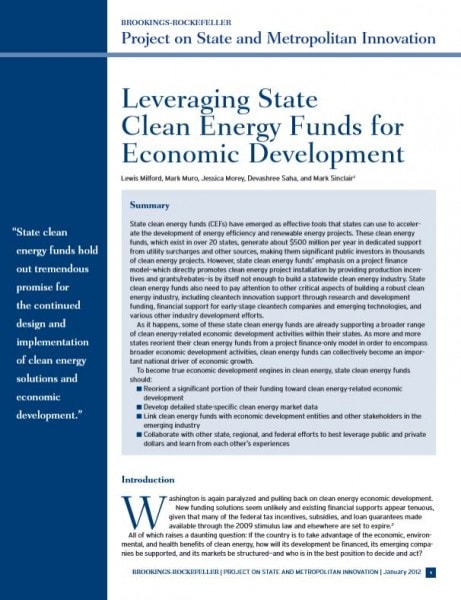Leveraging State Clean Energy Funds for Economic Development
January 12, 2012
Lew Milford, Devashree Saha, Mark Muro, Mark Sinclair | Clean Energy Group, Brookings Institute
This paper from the Brookings-Rockefeller Project on State and Metropolitan Innovation points to one locus of progress on clean energy economic development—state clean energy funds (CEFs)—and suggests how their potential impact can be maximized.
Often supported by small public-benefit surcharges on electric utility bills, CEFs represent a little-known but significant source of needed funding for clean energy activities in 20 states.
Over the last decade, state CEFs have invested over $2.7 billion in state dollars to support renewable energy markets while leveraging another $9.7 billion in additional federal and private sector investment. Along the way the funds have supported the deployment of over 72,000 individual projects ranging from solar installations on homes to large wind farms to hydrokinetic systems on rivers. And now, with economic development critical, some of these funds have begun to experiment with a new focus on deeper-going industry development.
While celebrating the funds’ moves beyond project finance, Lew Milford of the Clean Energy Group and Mark Muro of Brookings argue that the CEFs can collectively become an even more important tool for economic growth in the nation’s states and metropolitan areas. To that end, the paper offers a four-part state and federal policy agenda that calls for states to reorient more of their CEF funding toward energy-related economic development; link CEFs with other economic development entities; collaborate with other state, regional, and federal efforts to leverage dollars and share experiences; and develop detailed state-and region-specific clean energy market data.





